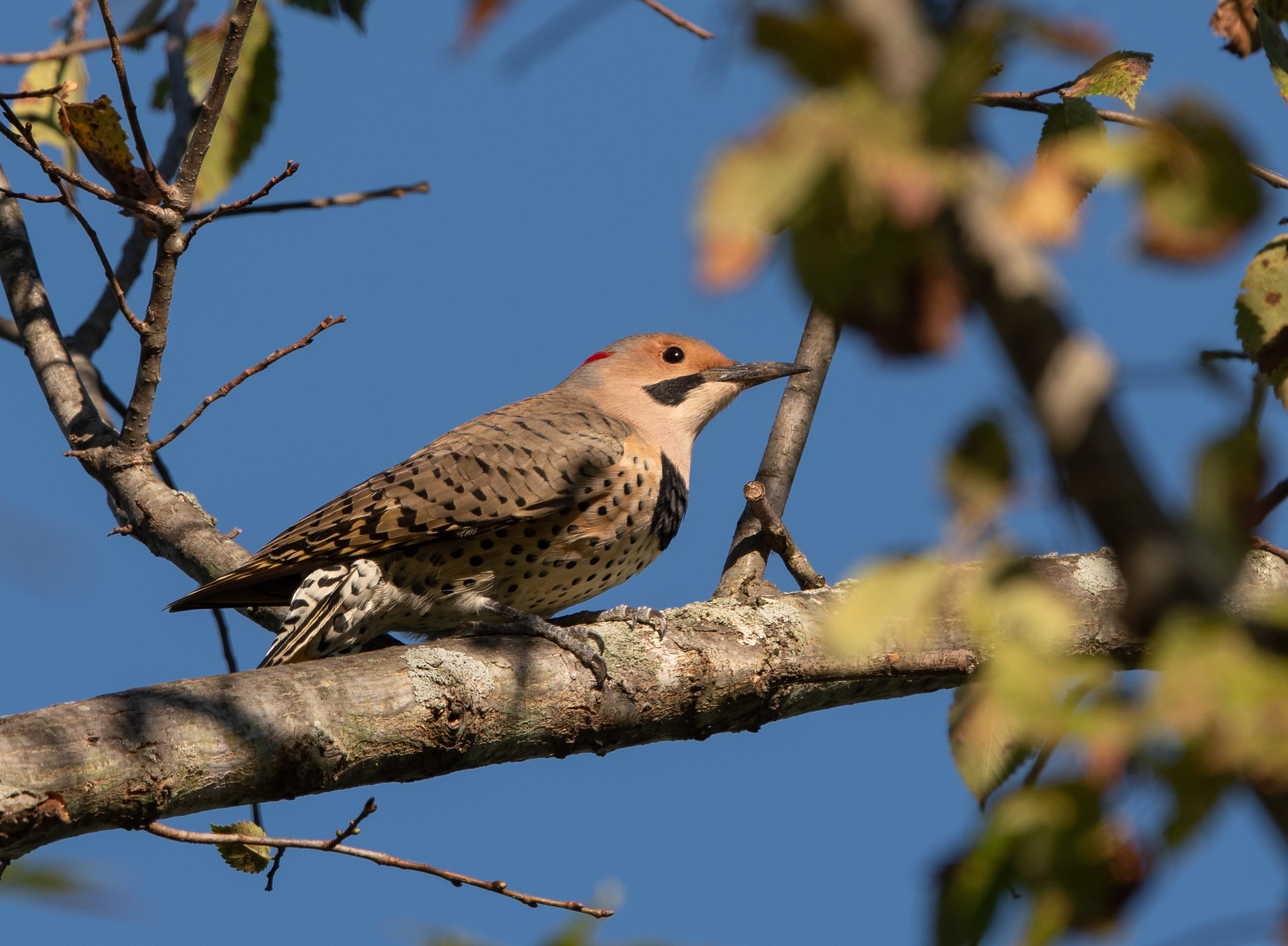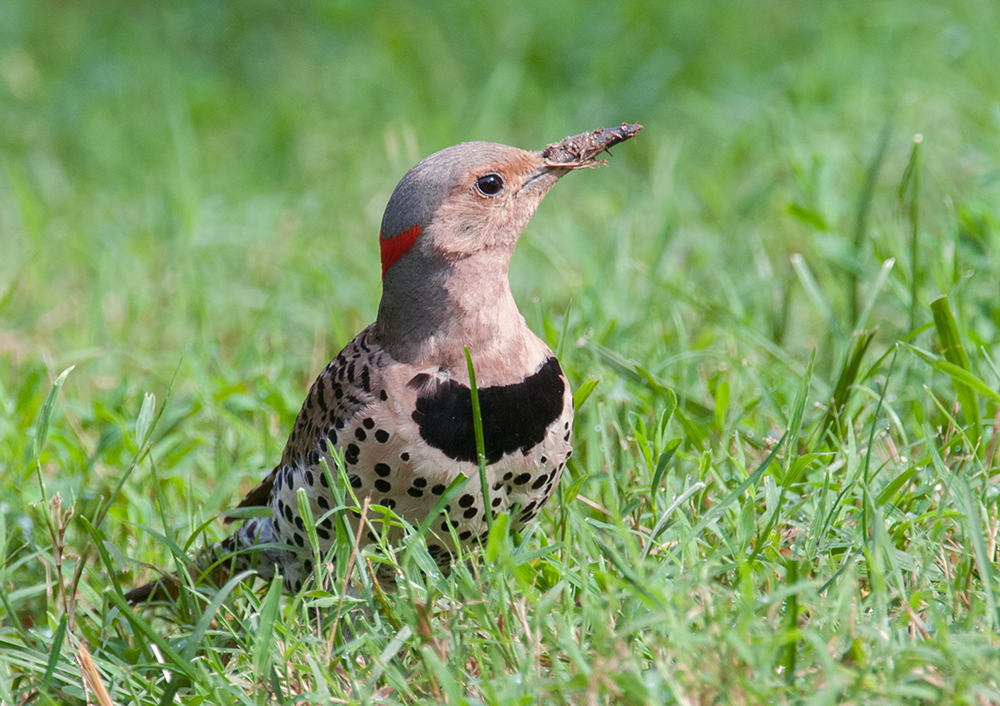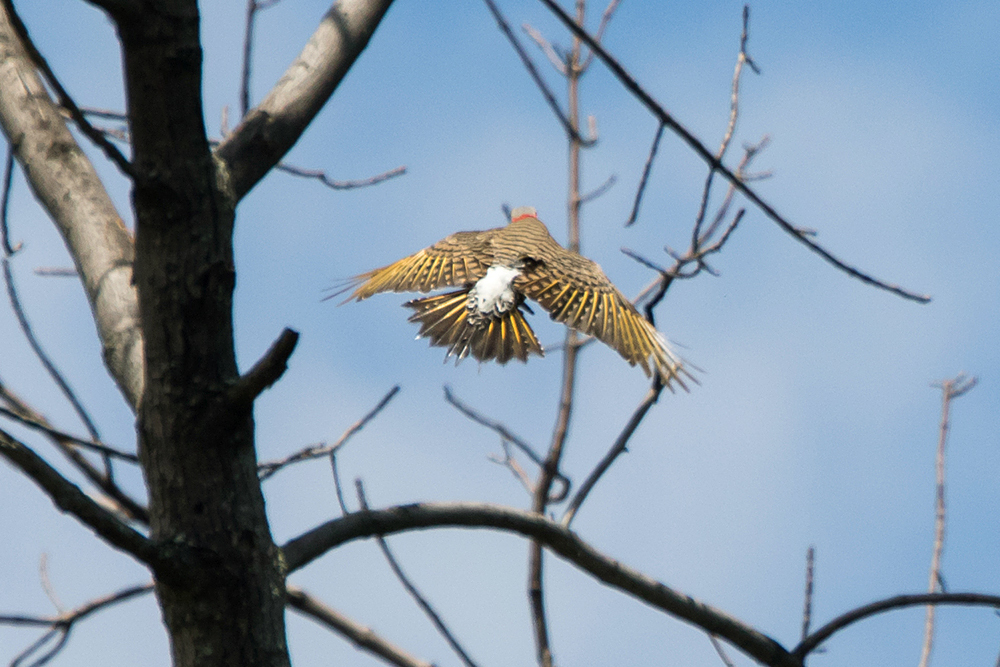| Year-round Resident | |
| Has Nested in Park |
Northern Flickers are year-round residents who nest at Monticello Park. They are common in the park, although you might have to search to find one.
Where to See Them in the Park
Flickers spend more time foraging on the ground than any other woodpecker species. They peck at the ground the way other woodpeckers peck at trees, eating a lot of ants, beetles, and other insects found in the soil. They also look for insects on tree trunks as other woodpeckers do. You can see them anywhere in the park, and they have nested in trees just past the dog exercise area.
Physical Description

Flickers are larger than they appear, weighing weigh about twice as much as a Red-bellied Woodpecker. Their plumage is unmistakable. Their brown back has black barring. They have a spotted belly, a large black breast crescent, and a large red crescent on the nape. Adults have the same plumage throughout the year. Male flickers have a black malar stripe (the stripe near the bill).

Female flickers at Monticello do not have a malar stripe. You often see flickers with soil on their bill from pecking at the ground for insects.

The flickers seen at Monticello are sometimes called the Yellow-shafted Flickers, because their feathers have bright yellow shafts. A western race of the Northern Flicker is sometimes called the Red-shafted Flicker. Its feathers have red shafts, and the males have a red malar stripe. Flickers of both races have a white rump, which can be an important fieldmark for identifying a flying bird. Like other woodpeckers, they have two long central tail feathers, which they use for anchoring when foraging on trees.
Vocalizations
A common call of the flicker is long and loud, and it is easy to confuse with the long call of the Pileated Woodpecker. The flicker's call tends to stay on the same pitch without rising and falling like the call of the Pileated. Another flicker call is a quieter series of two-note phrases — flick-a, flick-a, flick-a.
Hear the vocalizations and sounds of the Northern Flicker.Notes
The Northern Flicker is the state bird of Alabama, where it is sometimes called a Yellowhammer. One of the nicknames for Alabama is the Yellowhammer State. Flickers are not related to a Eurasian species called the Yellowhammer, who is in the same family as the New World sparrows. There are five other species of flickers, all of whom live in the New World.
Origin of Names
Common Names: Northern because it is the most northerly of the flicker species There is no agreement on the origin of flicker. It could be from the flick-a call. It could be from the flicker of gold the bird flashes when it flies. Or it could be from the Old English word flicorian, which means flutter or lightly flap one's wings.
Genus Name: Colaptes means chisel.
Species Name: Auratus means golden, from the Yellow-shafted race.
Northern Flicker video footage
Return to the Index
